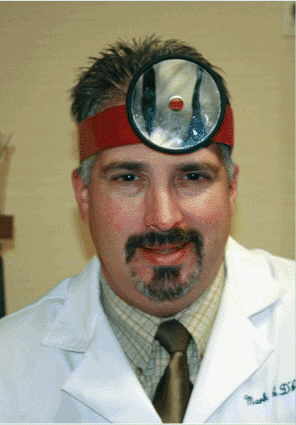Patients who complain of daytime sleepiness may have obstructive sleep apnea syndrome (OSAS), but otolaryngologists should not assume that OSAS is the sole or even the primary cause, according to experts here at the American Academy of Otolaryngology-Head and Neck Surgery (AAO-HNS) annual meeting. Primary insomnia, restless legs syndrome (RLS), or other sleep disorders may be the culprits instead, or may be present along with OSAS.
Explore This Issue
February 2009 The diagnosis of cataplexy is often delayed, and because the symptoms are sometimes very subtle, we may miss it, because some muscle groups are affected, while others are not. The important thing is to separate narcolepsy from idiopathic hypersomnia.
The diagnosis of cataplexy is often delayed, and because the symptoms are sometimes very subtle, we may miss it, because some muscle groups are affected, while others are not. The important thing is to separate narcolepsy from idiopathic hypersomnia.
-Mark A. D’Agostino, MD
The panel was organized by the Sleep Disorders Committee of AAO-HNS to educate otolaryngologists on sleep disorders beyond OSAS, said Mark A. D’Agostino, MD, Clinical Instructor of Otolaryngology at the Yale University School of Medicine in Stamford, CT, and Assistant Professor of Surgery at the Uniformed Services University of Health Science in New Haven, CT.
Otolaryngologists are often not aware of other sleep disorders such as insomnia, restless legs syndrome, and narcolepsy, he said. We wanted to educate them about other areas of sleep medicine that do not involve sleep-disordered breathing.
Narcoleptic Patients Often Have Cataplexy as Well
For example, in his presentation on narcolepsy, Dr. D’Agostino discussed the genetic and environmental factors that play a role in this condition, which is characterized by sudden onset of sleep in inappropriate places, such as while driving and at work. A high percentage of patients with narcolepsy also have cataplexy, Dr. D’Agostino said. Cataplexy is characterized by complete or partial loss of muscle tone, and often occurs when the patient is experiencing strong emotions. Episodes of cataplexy are usually short-lived.
The diagnosis of cataplexy is often delayed, and because the symptoms are sometimes very subtle, we may miss it, because some muscle groups are affected, while others are not, Dr. D’Agostino said. The important thing is to separate narcolepsy from idiopathic hypersomnia.
Once narcolepsy has been diagnosed, concomitant cataplexy is also easier to target. It’s important to get the correct diagnosis so that patients can get the correct medications, Dr. D’Agostino said.
Genetics research on narcolepsy and cataplexy is focused on human leukocyte antigens (HLA) subtyping. The research shows a strong association of the genes DBQ1*0601 and DQA1*0102 with both of these conditions, he said. However, he stressed that having these genes is not a definitive diagnosis. Genetic typing is better at ruling these conditions out rather than confirming them.
Leave a Reply